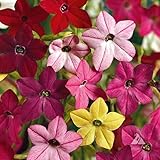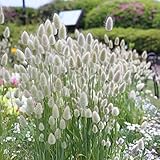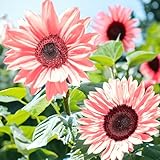Nicotiana Alata belongs to the tobacco family, is an annual herbaceous perennial plant, and is commonly known as Flowering tobacco, Jasmine tobacco, Sweet tobacco, Winged tobacco, Tanbku or Persian tobacco. This flowering plant is native to the Americas, Australia, Southwestern Africa and the South Pacific.
Curious to learn more about Nicotiana alata a.k.a. Flowering tobacco? Keep reading our guide and become an expert grower!
Quick Facts
| Botanical Name | Nicotiana alata |
| Common Name | Flowering tobacco, Jasmine tobacco, Sweet tobacco, Persian tobacco |
| Plant Type | Flowering herbaceous perennial |
| Mature Size | up to 1-1.5 meters (3-5 feet) tall |
| Sun Exposure | Full sun, Partial shade |
| Soil Type | Moist, well-drained, loamy, sandy |
| Soil pH | Acid, Neutral, Alkaline |
| Bloom Time | Summer, Early Autumn |
| Flower Color | White, light yellow, red, pink, and purple |
| Hardiness Zones | 10-11 (USDA) |
| Native Area | Central and South America |
About Flowering Tobacco
- You can harvest the blossoms of your Nicotiana alata plant and use them in flower arrangements. Thanks to their elegant little blooms and strong jasmine scent, flowering tobacco blooms represent a great choice for cut flower arrangements.
- Nicotiana alata is excellent as a bedding plant and when grown in an ornamental flower bed, it adds a variety of colours, forms and fragrances. You can plant tall flower varieties close to your window, deck or porch from where you can enjoy the fragrance and see the butterflies and hummingbirds that will visit the blooms.
- You can group newer hybrid varieties with other types of flowers or even with other varieties of Nicotiana. Their strong fragrance attracts nighttime pollinators like moths and Lepidoptera which makes them a wonderful plant addition to your garden.
- In the gardening world, Flowering tobacco is primarily grown for its ornamental characteristics and its strong jasmine-like fragrance and many cultivars and hybrids are derived from it. It is a popular summer plant that comes in a wide variety of colours and sizes. It is a perfect choice if planted near a seating area as it has amazing scented flowers.
- There are several types of Flowering tobacco that differ in size, colour and other characteristics. The three most known varieties of Flowering tobacco are ‘Lime Green’ which reaches around 0.6 meters tall and has very fragrant flowers, ‘Nicki red’ which grows 0.5 meters in height and has deep red blooms, and last but not least ‘Perfume Deep Purple’ which has rich purple flowers and also grows about 0.6 meters tall.
- The plant is not pet friendly as it contains toxic substances like alkaloid nicotine and anabasine which are toxic to humans too if ingested in large quantities.
- All parts of the plant contain nicotine which is extracted and used as an insecticide. Also, you need to be aware of the fact that small amounts of nicotine can be mildly toxic to both humans and animals. Although is not very probable to ingest large amounts of Nicotiana alata by accident, it would be wise to keep children and pets away from the plant.
Nicotiana Alata Features: An Overview
- Nicotiana Alata is a tender herbaceous perennial from the Solanaceae (Nightshade) family native to South America which can grow up to 0.60 meters tall.
- The flowers are shaped like rosettes with textured, wavy margins that have a very strong fragrance, released especially in the evening and night.
- The colours of the flowers vary from green to yellow or even white. The flowers are produced on triangular raceme structures. This is a form of unbranched inflorescence where the oldest flowers are formed at the base and the new blooms appear at the tip as the plant is growing.
- The attractive and fragrant blooms of Flowering tobacco open only at night, so this plant makes a perfect addition to moon gardens.
- Nicotiana alata flowers have five star-shaped petals, but the petals are fused into a long tube that hangs down on the stem. Their bloom season is from early summer to the first frost.
- The leaves grow to a length of approximately 25 cm and are much larger than the flowers. They can be dark green or light green with larger spatulate leaves and winged petioles at the base of the plant. The leaves from the tip of the plant tend to be smaller.
- Nicotiana alata is a great companion plant for mound-forming flowers like Portulaca or Lobelia. Flowering tobacco can make a great companion plant for a wide range of ornamentals, but it is important to keep in mind that some plants are incompatible with Tobacco jasmine, among them are mint, onion, anise, carrot or pumpkin.
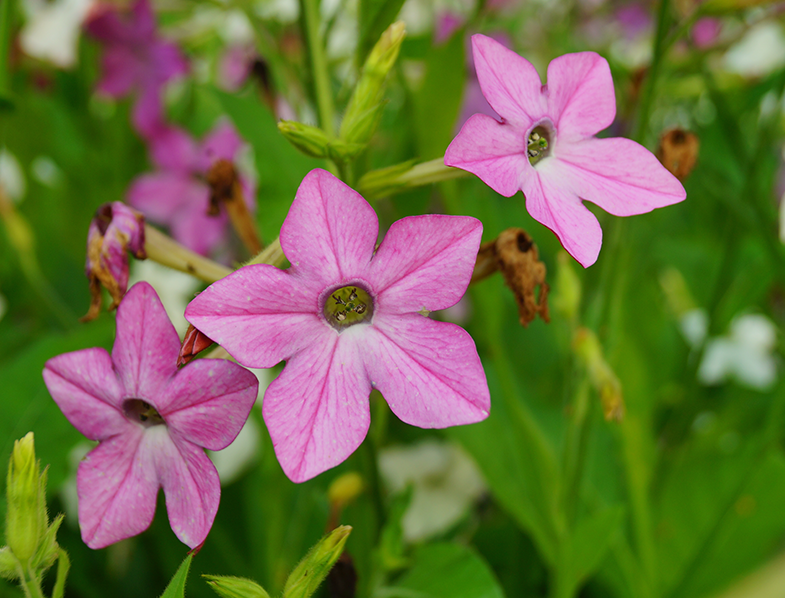
Growing Flowering Tobacco
Nicotiana alata is generally grown and sold as an annual plant, although some species of nicotiana flower are short-lived perennials. Nicotiana alata grows in moist, very well-drained soil, it needs full sun but can also develop in partial shade.
Flowering tobacco needs at least six hours of direct sunlight on most days. If you live in a very hot climate, provide plants with some shade too in the afternoon. The Flowering tobacco plant needs warm weather and warm soil to establish itself.
Immediately after planting, feed the plant with a balanced organic fertiliser. After that, you can continue to feed it monthly throughout the development stage. The development period lasts from early summer to the first frost in the fall. It also prefers soil that is rich in organic matter with a pH between 6.1 to 7.8. The flowers that wither need to be cut off the plant in order to let the new blooms develop.
Even though Nicotiana alata is treated as an annual plant, it is actually a short-lived perennial and that is the reason why it can be overwintered outdoors in milder areas given a thick, dry mulch. Also if you live in an area where temperatures generally drop below 10 degrees Celsius you will have to cover the plants. It is important to protect this plant from freezing temperatures as Nicotiana plants are known to be highly sensitive to colder climates where they might suffer irreparable damage and even die.
One important tip when it comes to growing and caring for your Nicotiana alata is that you have to keep the plants weeded and remove or thin out any self-sown seedlings from previous years. Self-sown seedlings from hybrid varieties tend not to flower as generously as the new plants. You will have to remove these seedlings each spring in order to have vigorous plants with many flowers.
When growing nicotiana alata, make sure not to plant it near vegetable gardens where you grow other nightshade plants like tomatoes, potatoes or pepper, as they may share and spread viruses like the Tobacco mosaic virus.
Generally, nicotiana alata does not have any notable problems with insects or pests, but it is susceptible to aphids and the remedy to this issue is water spray or insecticidal soap. Another common issue is represented by the tobacco budworms who eat holes in the buds and eat plant seeds in the summer. You can try to pick them up at dusk when they come to feed. By tilling your annual beds you can help destroy the pupae and decrease populations the next year.

Planting Flowering Tobacco
If you want to plant Nicotiana alata in your flower garden you will only have to scatter seeds in the early weeks of spring and be a little patient before you can enjoy your flowering tobacco plants fully blooming, as the flowers will appear only at the beginning of August. If you want to shorten the waiting period, plant the tiny seeds indoors eight to ten weeks before the final frost and be sure to keep the seeds in a place where the temperature will not go below 17 degrees Celsius.
Place the seeds on the soil, but not very deep as the seeds need to have sufficient light in order to properly germinate. After approximately ten days the sprouts will appear and soon after that, little rosettes will appear too. If the seedlings turn yellow, it means that you need to water them more frequently.
- Native to South America: Derived from the species of flowering tobacco native to South America, this cultivar brings a touch of exotic beauty to your garden. Striking Height: Reaches heights between 2 to 4 feet, creating a striking vertical accent in your garden or landscape, perfect for borders and containers.
- Fragrant Blooms: Delightful jasmine-like scent emitted by the flowers enhances the overall sensory experience and adds a charming allure to your outdoor spaces. Vibrant Color Palette: Showcases a mix of vivid red, pink, white, and lavender trumpet-shaped flowers that are sure to captivate your senses and attract pollinators.
- Adaptable Growth Habits: Grown as an annual but can sometimes behave as a short-lived perennial in suitable climates, requiring full sun to partial shade and well-draining soil for optimal growth.
- 0.25 oz (~ 59375 Seeds), 1000 MAX COVERAGE AREA (SQUARE FT.)
- 0.5 oz (~ 118750 Seeds), 2000 MAX COVERAGE AREA (SQUARE FT.)
- QUALITY SEEDS: 30 Seeds to Plant of Rare Bunny Tail Grass
- EXOTIC PLANT: Exotic and Prized Ideal for mass planting. Beautiful garden plants.
- EASY TO GROW: No stratification needed. Grows well indoors or in a greenhouse.
- CZ GRAIN GUARANTEE: Customer Satisfaction Guaranteed. Please reach out with any questions or concerns.
- Enchanting Pink Blooms: Experience the beauty of Iris Tectorum Rose Sunflowers, adorned with enchanting pink petals for a graceful garden display.
- Non-GMO Heirloom Variety: Cultivate a garden with authenticity and charm using our non-GMO heirloom seeds. Preserve the natural allure of your blooms.
- Easy Grow Instructions: Hassle-free gardening for all skill levels. Follow our simple planting instructions to ensure successful germination and growth.
- Flourishing Garden: Plant with confidence and watch your garden flourish with 50PCS of Iris Tectorum Rose Sunflowers. Perfect for beds, borders, and more.
- Great Gardening Gifts: Share the joy of gardening with friends and family. These sunflower seeds make for a thoughtful and elegant gift, perfect for any gardening enthusiast.
Last update on 2024-10-18 / Affiliate links / Images from Amazon Product Advertising API
You can also enrich the soil with a weekly dose of fish emulsion and a balanced mixture of water, soluble feed and granular mix in a proportion of 20-20-20. When the seedlings start to be more established you can slowly expose them to outdoor life, increasing the time of exposure each day, until they are outdoors all day long. This way at the beginning of the summer you will have the first blooms of Nicotiana alata in your garden.
When planting Nicotiana alata be sure to maintain enough space between plants. It is recommended to plant them at approximately 30 to 35 cm distance from one another so that each plant has enough space to develop. If they get enough space, Nicotiana alata plants can reach 1 to 1.5 meters in height.
Watering Flowering Tobacco
Nicotiana alata plants need well-watered soil, but be sure not to keep them in soggy soil. To keep your plants healthy and happy, make sure you water them regularly, but do not allow them to stand in water for too long. To prevent the roots of the plant from standing in water and avoid fungus formation, be sure to grow your Flowering tobacco plants in airy soil and use ground watering methods.
The easiest way to determine how frequently to water your Nicotiana alata is by taking into consideration a few important factors like soil type, sun conditions and temperature. When you notice that the soil is completely dried out, that means that you have to water the plant. However, when the surface of the soil is still wet there is no need to add more water. With the monitorization of the soil, you ensure the plant’s balance of moisture which will keep it healthy and prevent any fungus outbreaks.
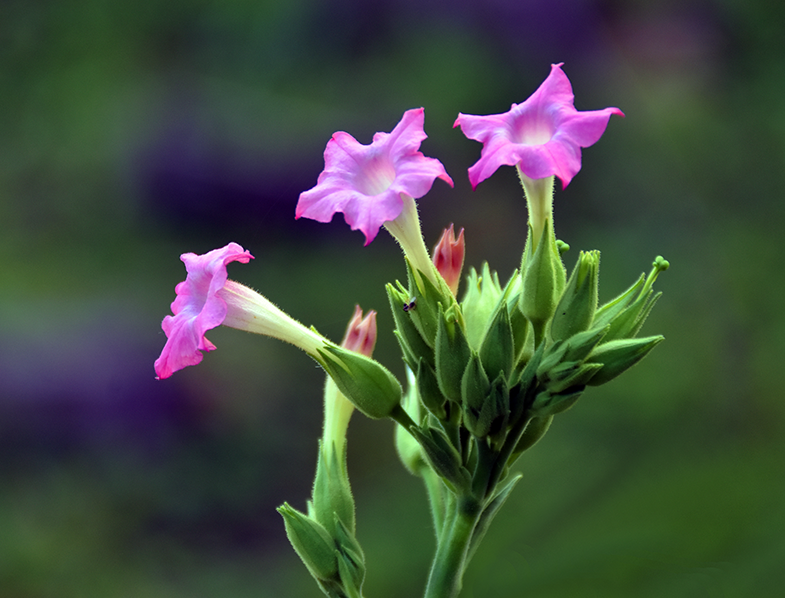
Propagating Flowering Tobacco
If you want to have more Nicotiana alata plants in your home or garden you can consider growing them from seeds. This is the most common way to propagate this plant. You can also let the plants grow freely and allow them to sow their next generation without any help from you but this method requires more patience as the plants will bloom in summer and that is when the propagation process will begin.
As mentioned above, you can harvest Flowering tobacco seeds yourself. The most important aspect is to know when the seeds are ripe. The blossom starts to change its colour immediately after it was pollinated and it might even turn brown and whiter. Once the seeds are ready to harvest, the seed pod will be brown and have a dry texture.
The only thing that you will need to do is to hold your hand under the seed pod and shake the stem gently. the bottom end will open up and release the seeds in your palm. After that, spread the seeds in a cool, dry spot for a couple of days or until they are completely dried. Seal them into an envelope or a paper bag and use a sticky note where to write the name of the plant and the date for easy identification next year.
To grow your new Nicotiana alata plants from seeds, place them in small containers using a mixture of soil and compost or a seed-starting mixture in the last weeks of winter or the first days of spring. Sprinkle just a little amount of soil over the seeds and then keep the containers in a warm place until germination takes place. The seeds will germinate within two to three weeks from planting. Once the weather is warm and there is no danger of frost, you can move your seedlings into your outdoor garden.
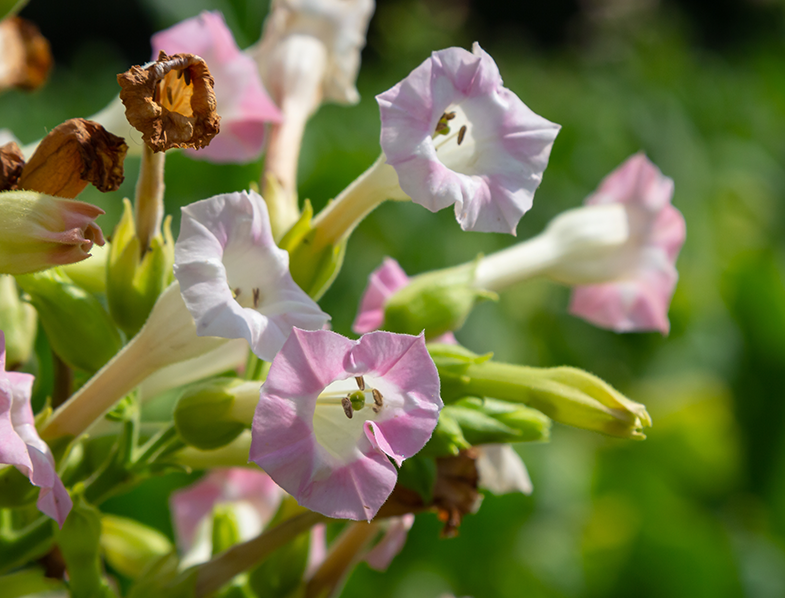
In Conclusion
If you are searching for a plant that has a very strong fragrance and comes in many colours, Nicotiana alata is the plant you are looking for. It is perfect for growing around a sitting area and especially for the late summer nights when it will release its jasmine-like perfume. It makes a great cut flower in arrangements that can enhance the beauty of any room and fill it with a pleasant smell.
Nicotiana alata is a low-maintenance plant, it only needs a place with at least six hours of exposure to direct sunlight, moderate watering and well-drained soil enriched with good-quality compost. Just remember that the plant contains a toxic substance called alkaloid nicotine which is toxic to pets and humans when ingested, so might want to avoid growing it if you have furry companions or small children.
Are you growing Flowering tobacco? Share your experience in the comments section!
Flowering Tobacco
Can you smoke flowering tobacco?
Flowering tobacco, belonging to the genus Nicotiana, is closely related to the tobacco used in cigarettes (Nicotiana tabacum). While it’s technically possible to smoke any part of the plant, flowering tobacco varieties are not grown or processed for this purpose, and smoking them can result in a harsh taste and potentially harmful effects due to the presence of various alkaloids. Always exercise caution and avoid smoking plants that aren’t specifically cultivated for that purpose.
Is flowering tobacco poisonous?
Yes, all parts of flowering tobacco plants, like other Nicotiana species, contain nicotine and other alkaloids that can be toxic if ingested in large amounts. This can be especially dangerous for pets and children if they consume parts of the plant. Symptoms of nicotine poisoning include vomiting, increased salivation, tremors, and in severe cases, respiratory failure and death.
Is flowering tobacco edible?
No, flowering tobacco is not considered edible. As mentioned, it contains nicotine and other alkaloids that can be harmful when ingested.
What is the use of flowering tobacco?
Flowering tobacco, especially species like Nicotiana alata and Nicotiana sylvestris, is primarily grown as an ornamental plant. Its tubular flowers are fragrant, especially in the evening, and they attract hummingbirds, moths, and other pollinators. The plants can be a beautiful and aromatic addition to gardens. Some indigenous cultures have also used various Nicotiana species in ceremonial or shamanic practices, though these uses are specific to certain cultures and traditions.

